Your cart is currently empty!
Tag: Scalability
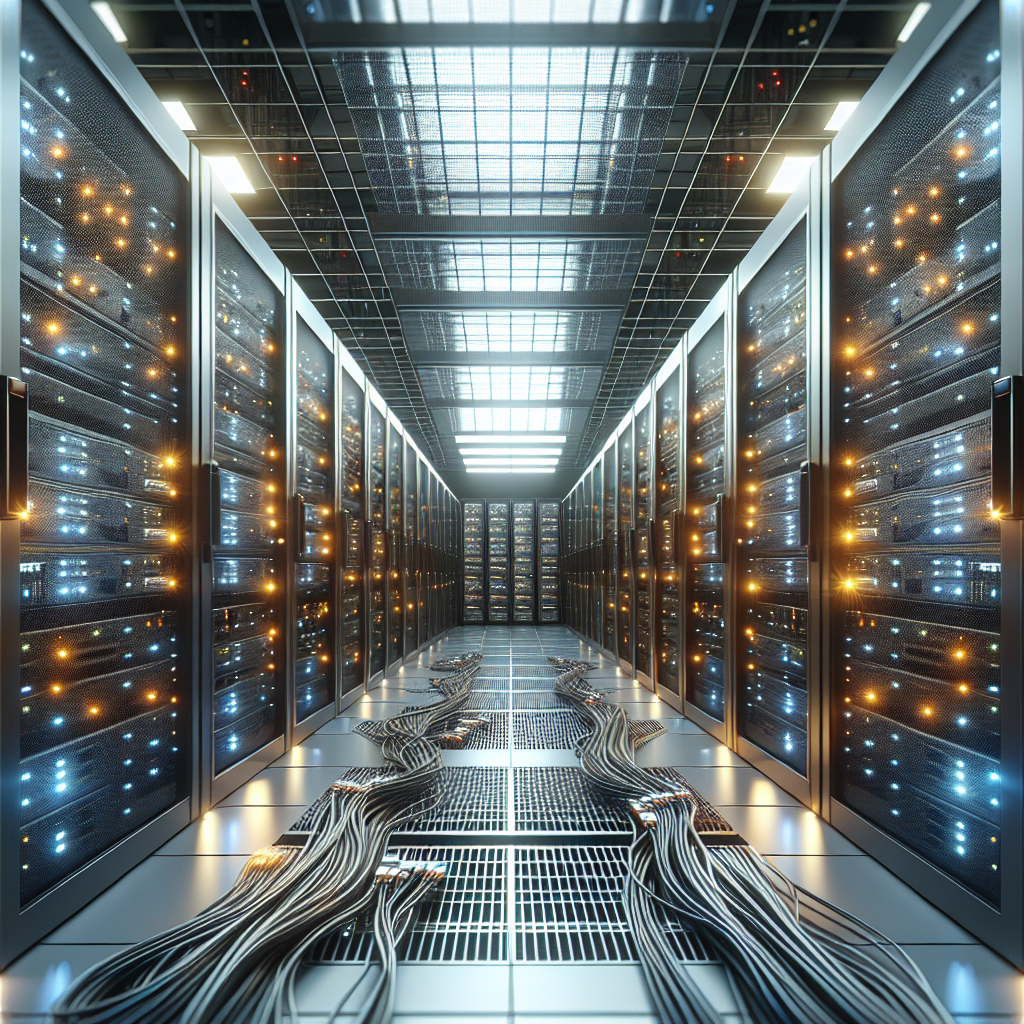
Scalability and Efficiency: How Data Center Servers Drive Business Growth
In today’s fast-paced digital world, businesses are constantly striving to stay ahead of the curve and drive growth. One key factor that plays a crucial role in achieving this goal is scalability and efficiency in data center servers. Data center servers are the backbone of modern businesses, enabling them to store, manage, and process massive amounts of data in a secure and reliable manner.Scalability in data center servers refers to the ability of the servers to handle increasing workloads and data volumes as a business grows. This is essential for businesses that are experiencing rapid growth or seasonal fluctuations in demand. Scalable servers can easily accommodate additional resources and storage capacity, ensuring that the business operations run smoothly without any disruptions.
Efficiency, on the other hand, focuses on optimizing the performance of data center servers to maximize productivity and minimize operational costs. Efficient servers are designed to deliver high performance while consuming minimal energy and resources. This not only reduces the overall operating expenses but also helps in lowering the carbon footprint of the business, making it more environmentally friendly.
Data center servers play a critical role in driving business growth by providing the necessary infrastructure to support digital transformation initiatives, enhance customer experiences, and streamline business operations. Here are some ways in which data center servers contribute to business growth:
1. Enhanced Performance: Scalable and efficient servers enable businesses to process data faster, run applications smoothly, and deliver superior performance to end-users. This can lead to improved productivity, higher customer satisfaction, and increased revenue opportunities.
2. Flexible Expansion: Scalable servers allow businesses to easily expand their infrastructure as needed, without the need for costly hardware upgrades or complex migrations. This flexibility enables businesses to quickly adapt to changing market conditions and seize new growth opportunities.
3. Improved Reliability: Efficient servers are designed to deliver high availability and reliability, ensuring that critical business operations run smoothly without any downtime. This reliability is essential for businesses that rely on their IT infrastructure to support their day-to-day operations.
4. Cost Savings: Scalable and efficient servers help businesses optimize their IT resources and reduce operational costs. By consolidating workloads and maximizing resource utilization, businesses can lower their overall IT expenses and improve their bottom line.
In conclusion, scalability and efficiency in data center servers are essential for driving business growth in today’s competitive landscape. Businesses that invest in scalable and efficient servers can benefit from enhanced performance, flexibility, reliability, and cost savings, ultimately enabling them to stay ahead of the curve and achieve their growth objectives.
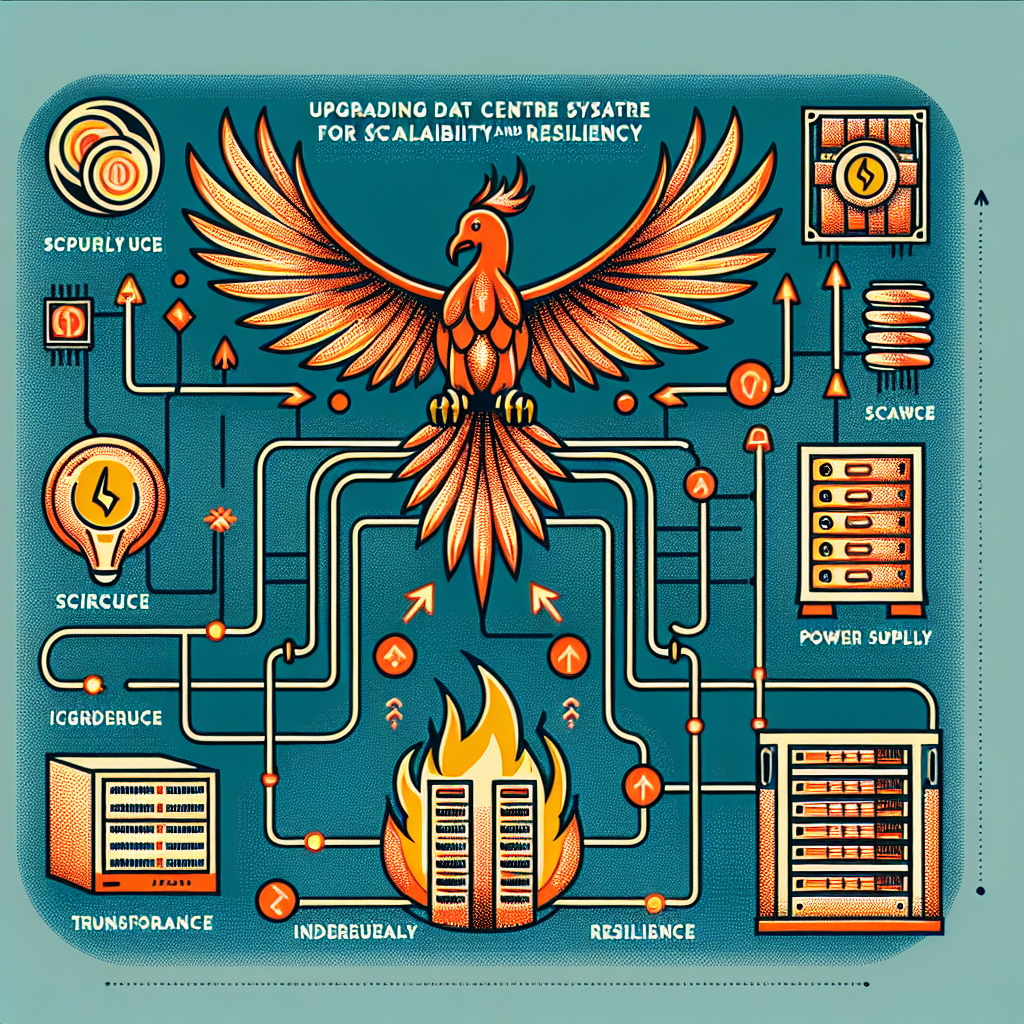
Upgrading Data Center Electrical Systems for Scalability and Resilience
As technology continues to advance at a rapid pace, the demand for data centers is increasing exponentially. With the growing amount of data being generated and stored every day, businesses are constantly looking for ways to upgrade their data center electrical systems to ensure scalability and resilience.One of the key considerations when upgrading a data center’s electrical system is scalability. As businesses expand and their data needs grow, it is important to have an electrical system that can accommodate this growth without causing disruptions or downtime. By upgrading to a scalable electrical system, businesses can easily add new servers, storage devices, and networking equipment without having to worry about overloading the system.
In addition to scalability, resilience is another crucial factor to consider when upgrading a data center’s electrical system. Data centers are the backbone of many businesses, so it is essential to have a system in place that can withstand power outages, equipment failures, and other potential disruptions. By upgrading to a resilient electrical system, businesses can ensure that their data center remains operational even in the face of unforeseen challenges.
There are several ways to upgrade a data center’s electrical system for scalability and resilience. One option is to install redundant power supplies and backup generators to ensure continuous power availability. Additionally, businesses can implement smart power distribution systems that can automatically detect and respond to power fluctuations in real-time.
Another important consideration when upgrading a data center’s electrical system is energy efficiency. With the rising cost of electricity and growing concerns about environmental sustainability, businesses are increasingly looking for ways to reduce their energy consumption. By upgrading to energy-efficient electrical systems, businesses can not only save money on their electricity bills but also reduce their carbon footprint.
Overall, upgrading a data center’s electrical system for scalability and resilience is a critical step in ensuring the continued success of a business. By investing in the latest technology and best practices, businesses can future-proof their data center and ensure that it can meet their growing data needs while remaining operational in the face of potential disruptions.
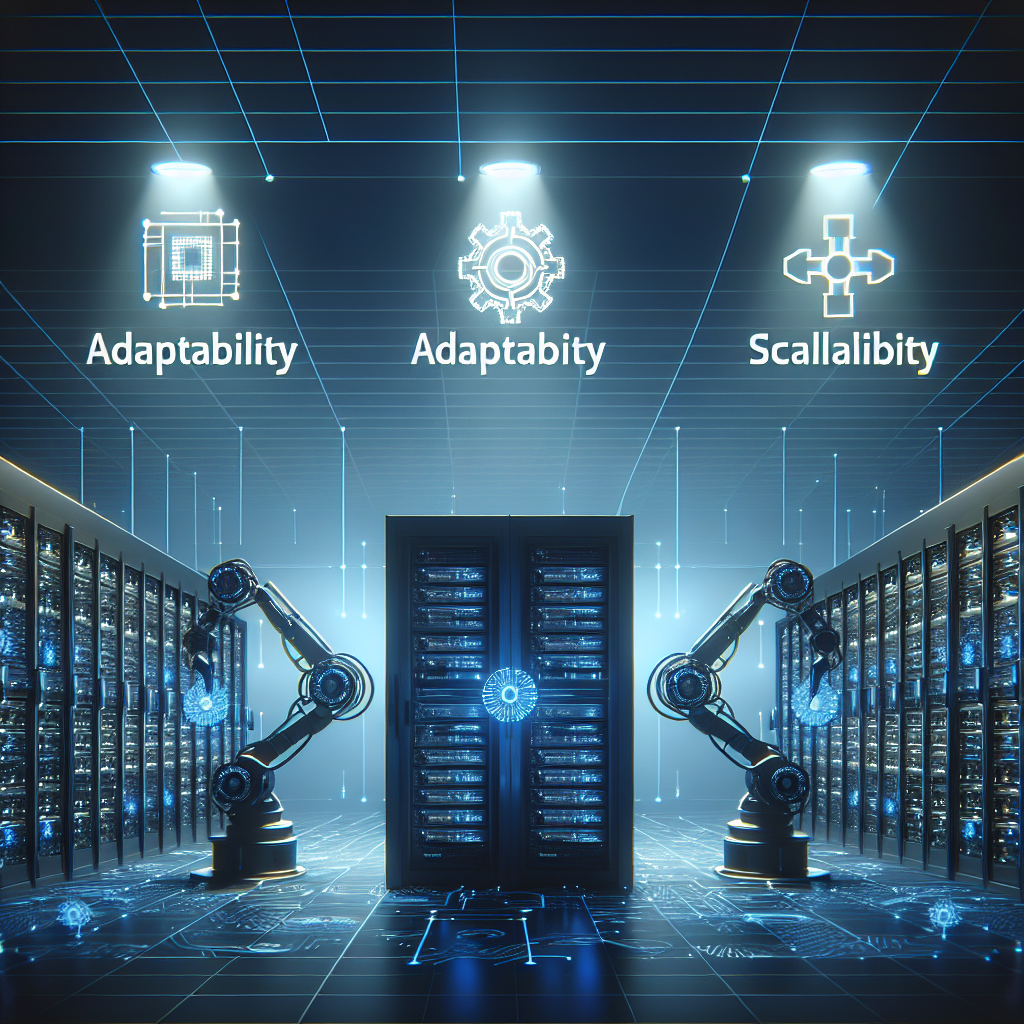
Scalability and Flexibility: How Data Center Servers Are Adapting to Changing Demands
In today’s fast-paced digital world, data centers play a crucial role in storing, processing, and managing vast amounts of data. With the exponential growth of data being generated from various sources like social media, IoT devices, and online transactions, data centers are constantly facing the challenge of adapting to changing demands.One of the key factors in ensuring the efficient operation of a data center is scalability and flexibility. Scalability refers to the ability of the data center servers to handle an increasing workload without sacrificing performance. Flexibility, on the other hand, refers to the ability of the servers to adapt to different types of workloads and requirements.
To meet the ever-changing demands of data processing, data center servers are constantly evolving to become more scalable and flexible. One of the ways in which servers are adapting is through the use of virtualization technology. Virtualization allows multiple virtual servers to run on a single physical server, thereby increasing the server’s capacity and flexibility.
Another trend in data center server technology is the use of cloud computing. Cloud computing allows data center servers to access resources and services over the internet, making it easier to scale up or down based on demand. This flexibility allows data centers to optimize their resources and reduce costs without compromising performance.
Moreover, data center servers are also leveraging technologies like software-defined networking (SDN) and software-defined storage (SDS) to improve scalability and flexibility. SDN enables data center administrators to dynamically allocate network resources based on workload requirements, while SDS allows for the efficient management of storage resources.
With the increasing demand for data processing and storage, data center servers must continue to adapt and evolve to meet these changing demands. By investing in scalable and flexible server technologies, data centers can ensure that they are well-equipped to handle the challenges of the digital age.
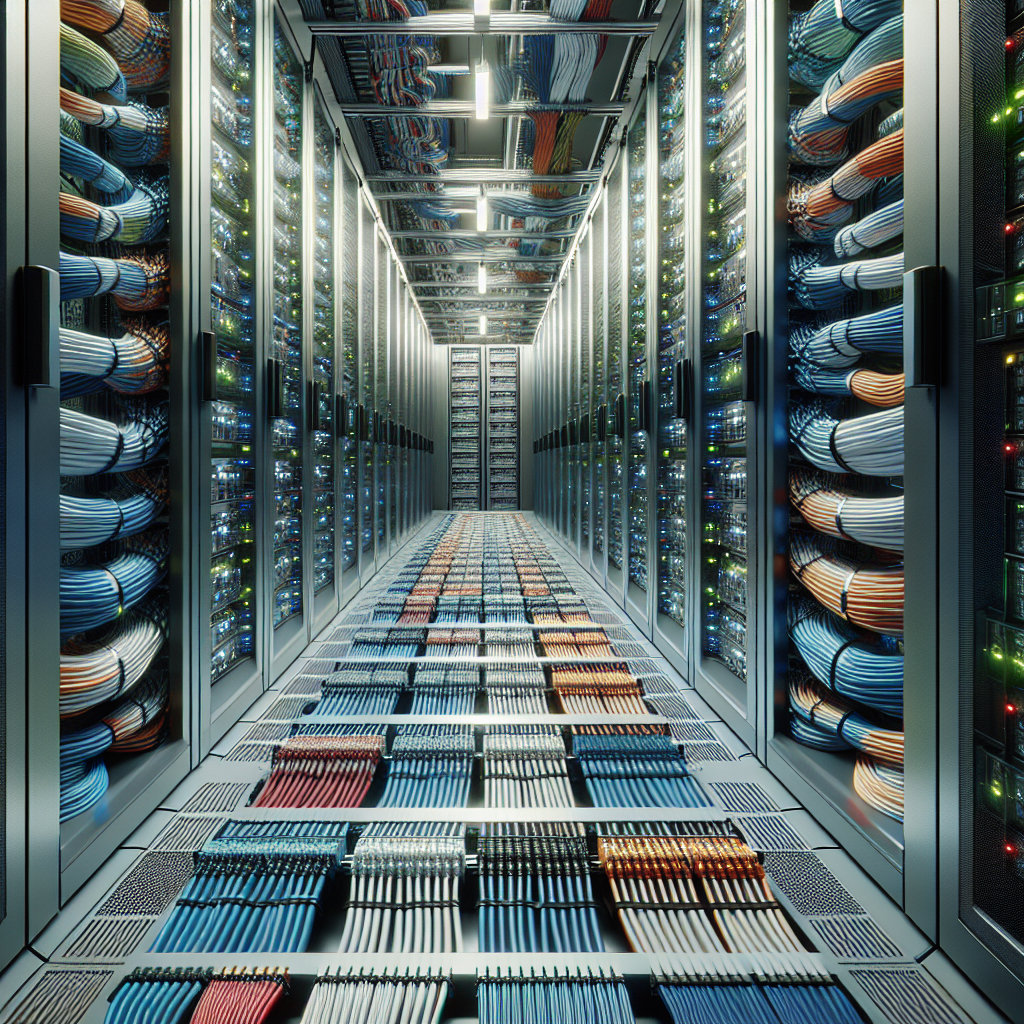
Data Center Cabling Best Practices: Ensuring Scalability and Flexibility for the Future
In today’s digital age, data centers play a crucial role in storing and processing vast amounts of information. As the demand for data continues to grow, it is essential for data center operators to ensure that their cabling infrastructure is both scalable and flexible to accommodate future needs.One of the key factors in ensuring scalability and flexibility in a data center is the proper implementation of cabling best practices. By following these guidelines, data center operators can optimize their cabling infrastructure to meet the evolving demands of their business operations.
One of the most important best practices in data center cabling is to plan for growth. This involves designing a cabling infrastructure that can easily accommodate additional servers, storage devices, and networking equipment as the data center expands. To achieve this, data center operators should invest in high-quality, high-density cabling solutions that can support increased data traffic and bandwidth requirements.
Another crucial aspect of data center cabling best practices is to organize and label cables effectively. This not only helps to improve the overall aesthetics of the data center but also makes it easier to troubleshoot and maintain the cabling infrastructure. By using color-coded cables and clear labeling systems, data center operators can quickly identify and resolve any connectivity issues that may arise.
Furthermore, data center operators should also consider implementing cable management solutions to reduce clutter and improve airflow within the data center. By using cable trays, racks, and management tools, operators can ensure that cables are neatly organized and properly secured, which can help to prevent cable damage and signal interference.
In addition to these best practices, data center operators should also stay abreast of the latest industry standards and technologies in cabling. By regularly updating their cabling infrastructure to comply with industry best practices, operators can ensure that their data center remains efficient, reliable, and secure.
Overall, by following data center cabling best practices, operators can ensure that their infrastructure is scalable and flexible enough to meet the demands of today’s data-driven business environment. By investing in high-quality cabling solutions, organizing and labeling cables effectively, and implementing cable management solutions, data center operators can future-proof their infrastructure and position their business for success in the years to come.

The Importance of Scalability in Data Center Network Infrastructure
In today’s digital age, data centers play a crucial role in storing, processing, and managing vast amounts of data for businesses and organizations. With the ever-increasing volume of data being generated and consumed, it has become imperative for data center network infrastructure to be scalable to meet the growing demands of users and applications.Scalability in data center network infrastructure refers to the ability of the network to expand or contract in response to changing needs without compromising performance, reliability, or security. It involves the capacity to accommodate more users, devices, applications, and data traffic while maintaining high levels of efficiency and flexibility.
There are several key reasons why scalability is important in data center network infrastructure:
1. Handling growth: As businesses and organizations continue to grow, their data processing and storage needs also increase. Scalable network infrastructure allows data centers to easily accommodate this growth without the need for costly and time-consuming upgrades.
2. Flexibility: Scalability enables data centers to adapt to changing business requirements and technological advancements. It allows for the seamless integration of new technologies and services, ensuring that the network can support future innovations.
3. Performance: A scalable network infrastructure ensures that data can be accessed and transmitted quickly and efficiently, even during peak usage periods. This helps to prevent bottlenecks and downtime, ensuring a smooth and uninterrupted user experience.
4. Cost-effectiveness: By investing in scalable network infrastructure, businesses can avoid the need for frequent hardware upgrades and expansions. This reduces overall costs and ensures a better return on investment in the long run.
5. Reliability and resilience: Scalability increases the resilience of data center network infrastructure by providing redundancy and failover mechanisms. This helps to minimize the risk of downtime and data loss, ensuring high levels of availability and reliability.
In conclusion, scalability is a critical aspect of data center network infrastructure that businesses and organizations cannot afford to overlook. By investing in scalable network solutions, data centers can ensure that they are well-equipped to handle the growing demands of users and applications, while maintaining high levels of performance, reliability, and security. Ultimately, scalability enables data centers to future-proof their infrastructure and stay ahead in today’s rapidly evolving digital landscape.

Scalability and Flexibility: Advantages of Data Center Servers
In today’s fast-paced digital world, businesses are constantly seeking ways to stay ahead of the competition. One crucial aspect of this is having a reliable and efficient data center server infrastructure. Scalability and flexibility are two key features that make data center servers indispensable for businesses of all sizes.Scalability refers to the ability of a data center server to handle an increasing workload as the business grows. This means that the server can easily accommodate additional users, applications, and data without compromising performance. Scalability is crucial for businesses that experience seasonal fluctuations in demand or rapid growth, as it allows them to easily adjust their server capacity to meet changing needs.
Flexibility, on the other hand, refers to the ability of a data center server to adapt to different workloads and configurations. A flexible server can support a wide range of applications and workloads, making it versatile and cost-effective. This flexibility allows businesses to easily deploy new applications, upgrade existing ones, and scale their infrastructure as needed.
There are several advantages to having a scalable and flexible data center server infrastructure. One of the most significant benefits is improved performance and reliability. Scalable servers can handle higher workloads without slowing down or crashing, ensuring that critical business operations run smoothly. Flexible servers can also adapt to changing technology trends and business requirements, allowing businesses to stay competitive in a rapidly evolving marketplace.
Another advantage of scalable and flexible data center servers is cost savings. By only paying for the server capacity that they need, businesses can avoid overspending on unnecessary resources. Additionally, the ability to easily scale up or down as needed can help businesses reduce operational costs and improve efficiency.
Scalable and flexible data center servers also offer businesses greater agility and responsiveness. With the ability to quickly deploy new applications and scale infrastructure, businesses can respond to changing market conditions and customer demands more effectively. This agility can give businesses a competitive edge and help them stay ahead of the curve.
In conclusion, scalability and flexibility are crucial advantages of data center servers that can help businesses improve performance, reduce costs, and increase agility. By investing in a scalable and flexible server infrastructure, businesses can ensure that they have the resources they need to grow and succeed in today’s digital economy.

Optimizing Data Center Cabling for Scalability and Growth
As businesses continue to expand and evolve, the need for scalable and flexible data center infrastructure becomes increasingly important. One key aspect of this infrastructure is the cabling system, which plays a crucial role in facilitating the seamless flow of data within the data center.Optimizing data center cabling for scalability and growth requires careful planning and strategic implementation. By following best practices and utilizing the latest technologies, organizations can ensure that their cabling infrastructure can support their future growth and expansion.
One of the first steps in optimizing data center cabling for scalability is to assess the current infrastructure and identify any potential bottlenecks or limitations. This includes evaluating the existing cabling layout, identifying any areas of congestion or inefficiency, and determining if the current system is able to support future growth.
Once the existing infrastructure has been assessed, organizations can begin to implement strategies to optimize their cabling for scalability. One key strategy is to utilize high-density cabling solutions, such as fiber optic cables, which can provide greater bandwidth and support higher data transfer speeds. By using high-density cabling solutions, organizations can reduce the amount of space required for cabling, improve airflow within the data center, and increase overall efficiency.
In addition to utilizing high-density cabling solutions, organizations can also benefit from implementing cable management best practices. This includes organizing cables in a structured and efficient manner, using cable trays and racks to keep cables organized and secure, and labeling cables to make it easier to identify and troubleshoot issues.
Another important consideration when optimizing data center cabling for scalability is to plan for future growth and expansion. This includes designing a cabling system that can easily accommodate additional servers, storage devices, and networking equipment, as well as implementing scalable solutions that can be easily upgraded or expanded as needed.
By taking a proactive approach to optimizing data center cabling for scalability and growth, organizations can ensure that their infrastructure can support their evolving business needs. By implementing high-density cabling solutions, employing cable management best practices, and planning for future growth, organizations can create a flexible and scalable cabling infrastructure that can support their long-term success.

The Benefits of Cloud-Based Data Center Servers for Scalability and Flexibility
Cloud-based data center servers have revolutionized the way companies manage and store their data. With the increasing demand for scalability and flexibility in the digital age, cloud-based servers offer numerous benefits that traditional on-premise servers cannot match.One of the main advantages of using cloud-based data center servers is scalability. With traditional servers, companies have to invest in expensive hardware and software upgrades to accommodate their growing data storage needs. This can be time-consuming and costly, especially for small and medium-sized businesses. However, with cloud-based servers, companies can easily scale their storage capacity up or down as needed, without the need for extensive hardware upgrades. This flexibility allows businesses to adapt to changing data storage requirements quickly and efficiently.
In addition to scalability, cloud-based data center servers also offer increased flexibility. With cloud servers, companies can access their data from anywhere at any time, as long as they have an internet connection. This allows for greater collaboration among employees and enables remote work capabilities. Additionally, cloud servers are more reliable than traditional servers, as they are typically housed in multiple data centers with redundant systems to ensure constant uptime. This means that companies can rest assured that their data will always be accessible and secure.
Another benefit of using cloud-based data center servers is cost savings. With traditional servers, companies have to pay for the upfront costs of purchasing hardware and software, as well as ongoing maintenance and upgrades. However, with cloud servers, companies only pay for the storage capacity and resources they actually use, making it a more cost-effective option for businesses of all sizes. Additionally, companies can avoid the costs associated with downtime and data loss, as cloud servers offer high levels of reliability and data redundancy.
Overall, cloud-based data center servers offer numerous benefits for companies looking to improve their scalability and flexibility. With the ability to easily scale storage capacity, access data from anywhere, and save on costs, cloud servers are a smart choice for businesses looking to streamline their data management processes. By leveraging the power of cloud-based servers, companies can stay ahead of the curve and adapt to the ever-changing demands of the digital world.

Maximizing Data Center Storage Performance and Scalability
In today’s data-driven world, businesses are constantly looking for ways to maximize data center storage performance and scalability. With the exponential growth of data being generated and stored, it is essential for organizations to have a reliable and efficient storage solution in place to meet their growing needs.One of the key factors in maximizing data center storage performance is choosing the right storage technology. Traditional spinning disk drives are being replaced by faster and more reliable solid-state drives (SSDs) and NVMe drives. These drives offer significantly higher performance and lower latency, making them ideal for high-performance applications and workloads.
Another important aspect of maximizing data center storage performance is implementing a storage architecture that is scalable and flexible. This involves using storage solutions that can easily scale up or down to accommodate changing storage requirements. Software-defined storage (SDS) and hyper-converged infrastructure (HCI) are popular options that offer scalability and flexibility, allowing organizations to easily add or remove storage capacity as needed.
In addition to choosing the right storage technology and architecture, organizations should also consider implementing data management practices that optimize storage performance. This includes implementing data deduplication, compression, and tiering strategies to reduce data storage requirements and improve storage efficiency. By effectively managing data, organizations can maximize storage performance and scalability while reducing costs.
Furthermore, organizations should also consider implementing data protection and disaster recovery solutions to ensure data availability and integrity. This includes implementing backup and replication solutions, as well as disaster recovery strategies to protect data in the event of a disaster or data loss.
Overall, maximizing data center storage performance and scalability requires a combination of choosing the right storage technology, architecture, and data management practices. By implementing a well-thought-out storage strategy, organizations can ensure that their data center storage infrastructure meets their growing needs and delivers optimal performance and scalability.
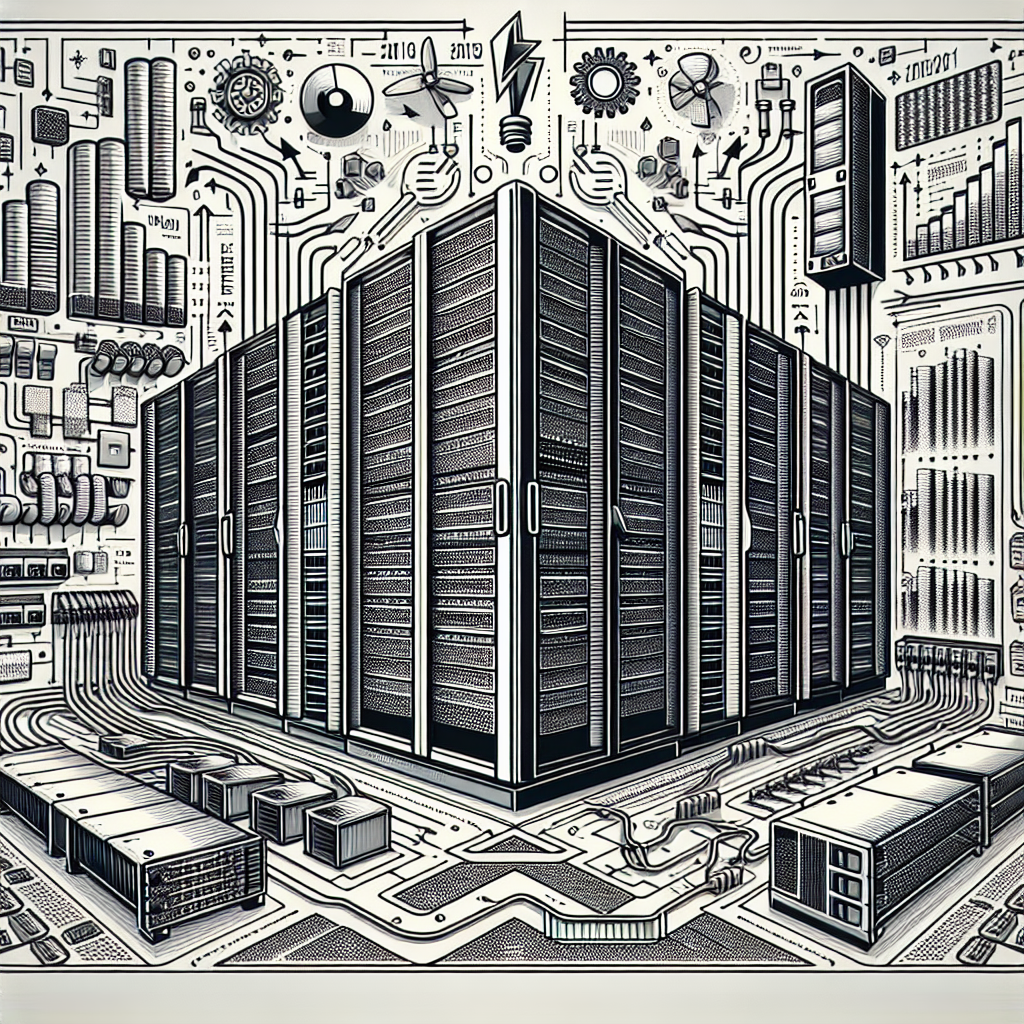
Optimizing Power Distribution for Scalability and Resilience in Data Centers
In today’s fast-paced digital world, data centers play a crucial role in storing, processing, and delivering vast amounts of information. With the rise of cloud computing, IoT devices, and big data analytics, the demand for data centers has never been higher. As a result, data center operators are constantly looking for ways to optimize their power distribution systems to ensure scalability and resilience.One key challenge in data center power distribution is ensuring that power is distributed efficiently and reliably to all the servers, storage devices, and networking equipment. As data centers grow in size and complexity, traditional power distribution systems may no longer be sufficient to meet the increasing demand for power. This is where optimizing power distribution comes into play.
One way to optimize power distribution in data centers is by implementing a modular power distribution system. Modular systems allow data center operators to easily add or remove power distribution units as needed, making it easier to scale up or down based on changing requirements. Additionally, modular systems can improve resilience by providing redundancy in case of a power outage or equipment failure.
Another key aspect of optimizing power distribution is ensuring that power is distributed evenly across all devices in the data center. Uneven power distribution can lead to hot spots, which can cause equipment to overheat and fail. By using intelligent power distribution units (PDUs) with built-in monitoring and management capabilities, data center operators can ensure that power is distributed evenly and efficiently, reducing the risk of downtime and equipment failure.
In addition to optimizing power distribution within the data center, operators can also take steps to optimize power usage at the facility level. This can include implementing energy-efficient cooling systems, using renewable energy sources, and adopting power management best practices. By reducing overall power consumption, data center operators can not only save on operating costs but also reduce their carbon footprint.
In conclusion, optimizing power distribution is essential for ensuring scalability and resilience in data centers. By implementing modular power distribution systems, using intelligent PDUs, and adopting energy-efficient practices, data center operators can improve reliability, reduce downtime, and lower operating costs. As the demand for data center services continues to grow, optimizing power distribution will become increasingly important in ensuring the success of data center operations.
